Samsung isn’t the only manufacturer to have taken a chance in the fledgling foldable phone market, but it has certainly been the most committed.
As well as the second-generation Samsung Galaxy Z Fold 2, the company also rolled out the Samsung Galaxy Z Flip and the revised Samsung Galaxy Z Flip 5G in 2020. So, if you want a Samsung smartphone that expands in your hand then you have a choice to make.
So which of these phones is flipping great, and which should you fold on? Let’s open these things up and take a closer look.
Samsung Galaxy Z Fold 2 vs Samsung Galaxy Z Flip price and availability
The Samsung Galaxy Z Fold 2 was announced on August 5, 2020 before hitting the shops on September 18 for $1,999 / £1,799 / AU$2,999.
In the opposite corner, the Samsung Galaxy Z Flip was announced on February 11, with a rollout coming just three days later. It launched at a price of $1,380 / £1,300 / AU$1,800.
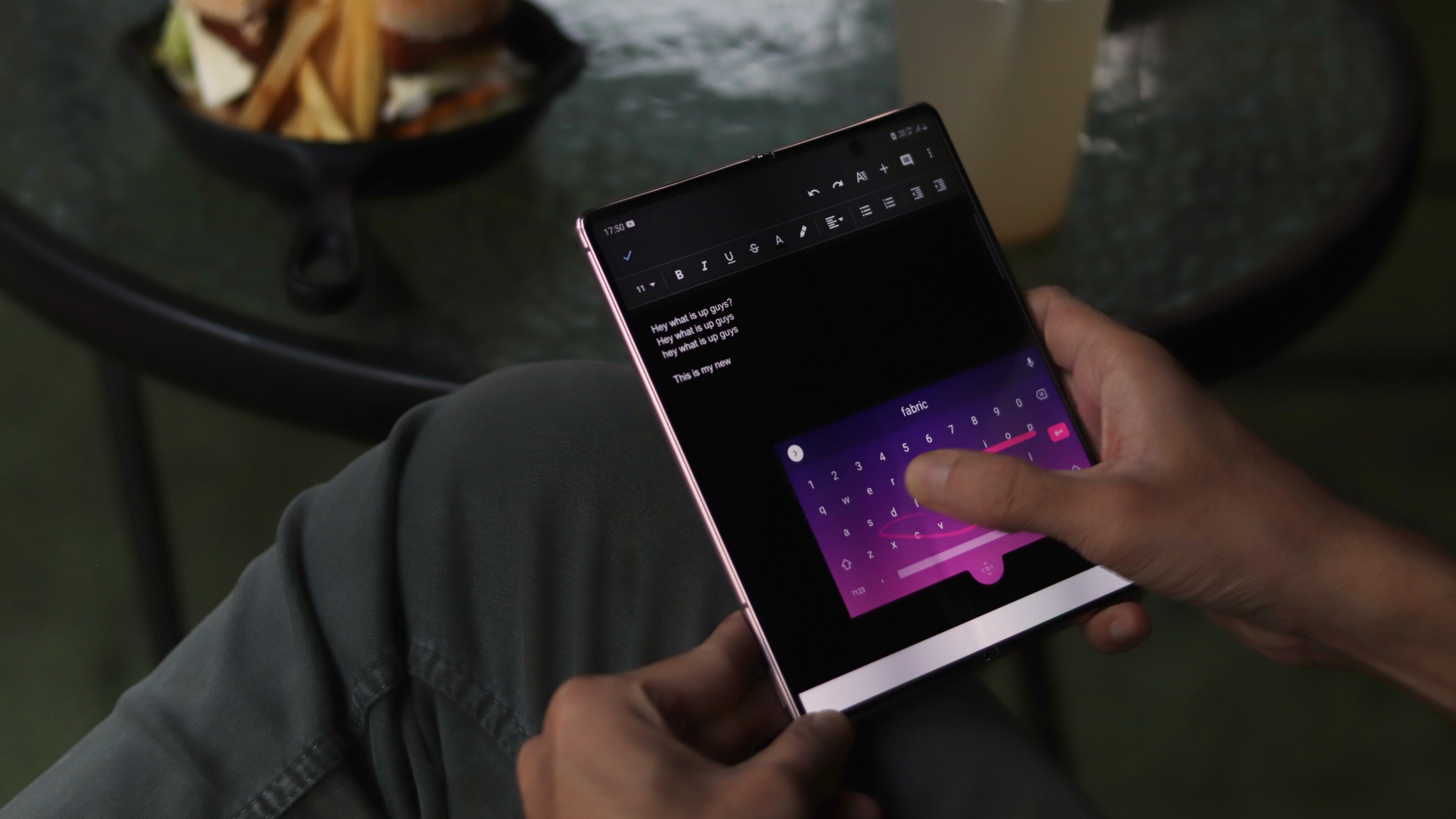
The original Galaxy Z Flip is essentially a half-generation behind its foldable brother, then. But the Samsung Galaxy Z Flip 5G was announced on July 22 and rolled out on August 7, complete with a revised spec to accompany its 5G connectivity and an accompanying price bump to $1,449 / £1,399 / AU$2,599.
Naturally, since none of these phones is the newest on the block, you’ll be able to find cut-price deals for each. Which is a good job in the case of the 'obnoxiously expensive' Samsung Galaxy Z Fold 2, to quote our own review.
Design
Really, design is the whole point with these two phones. And yes, we’ll be treating the Samsung Galaxy Z Flip and the Samsung Galaxy Z Flip 5G as one and the same device unless otherwise stated.
The key feature of both phones is that they fold in two, unfurling a much larger display when stretched out. So the key question is: how do you want your phone folded? But also while we’re at it, how big do you want your phone?
With the Samsung Galaxy Z Fold 2, you’re essentially getting a full-sized smartphone that folds out into a small (159.2 x 128.2 x 6.9mm) tablet. The Samsung Galaxy Z Flip, on the other hand, is a full-sized (167.3 x 73.6 x 7.2mm) smartphone that folds down into a highly portable square.
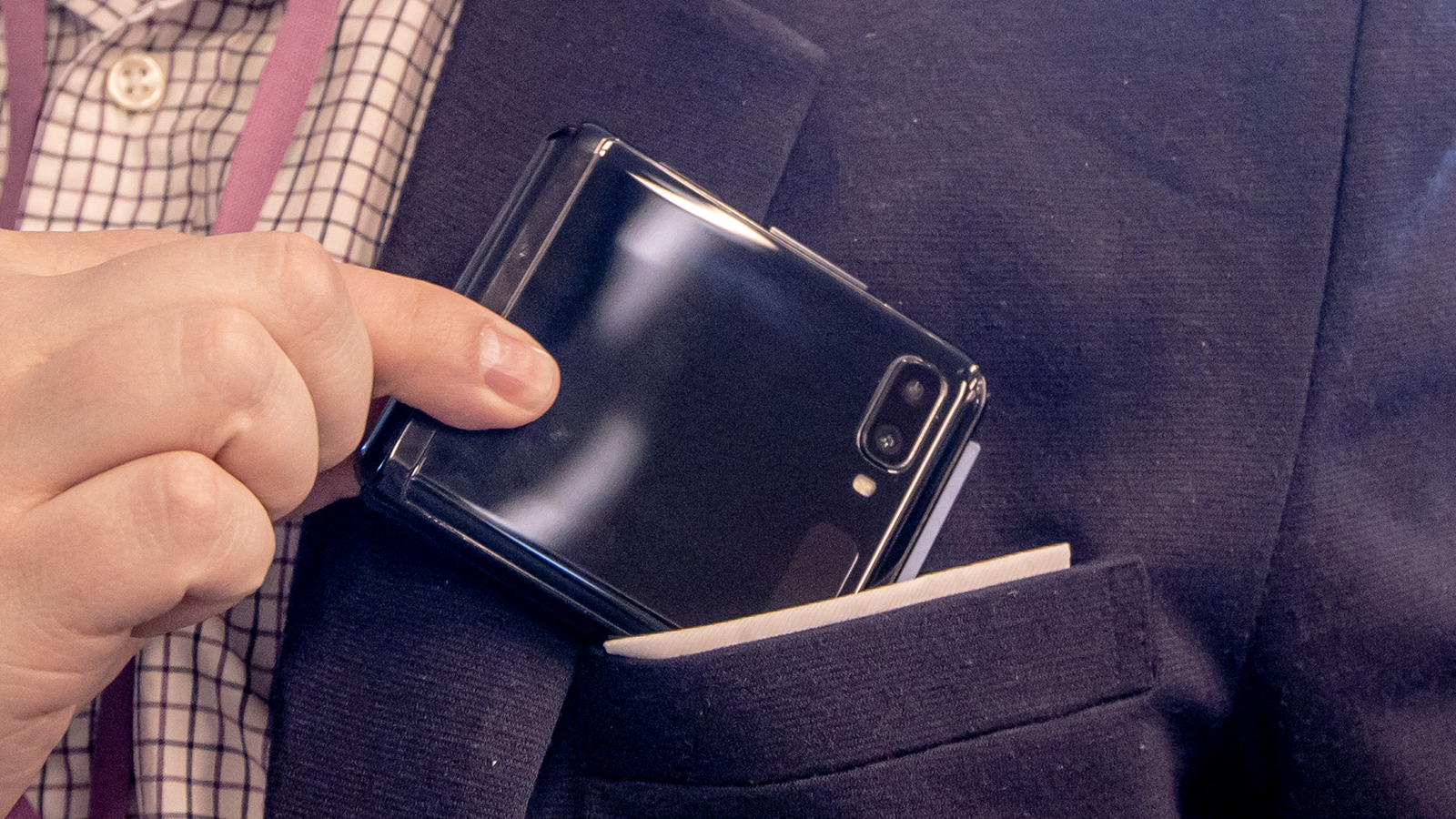
Driving home this difference in approach, the Samsung Galaxy Z Fold 2 weighs 282g, which is about 50g heavier than the monstrous Xiaomi Mi 11 Ultra. The Galaxy Z Flip, by contrast, weighs 182g, which is pretty much the same weight as your average Android phone.
Thanks to the work done (and mistakes made) with the first generation Samsung Galaxy Z Fold, neither phone looks or feels like a prototype.
In our review of the Galaxy Fold 2, we said that it felt like Samsung’s vision of the future of phones had been fully refined. There’s a fresh sense of polish to the phone’s screen-folding technology, with a solid ‘Hideaway Hinge’ that enables you to prop open its inner display anywhere between 75 and 115 degrees.
The Galaxy Z Flip is technically a first-generation device, but it clearly benefits from the work that went into the original Galaxy Z Fold, with a solid hinge bisecting its old-school candy-bar design. Once unfurled, you could mistake the device for any regular Android phone.
Both phones contain a crease down the middle of the screen, betraying their moving parts. But it’s only noticeable when you’re looking for it, or if you’re a stickler for such things.
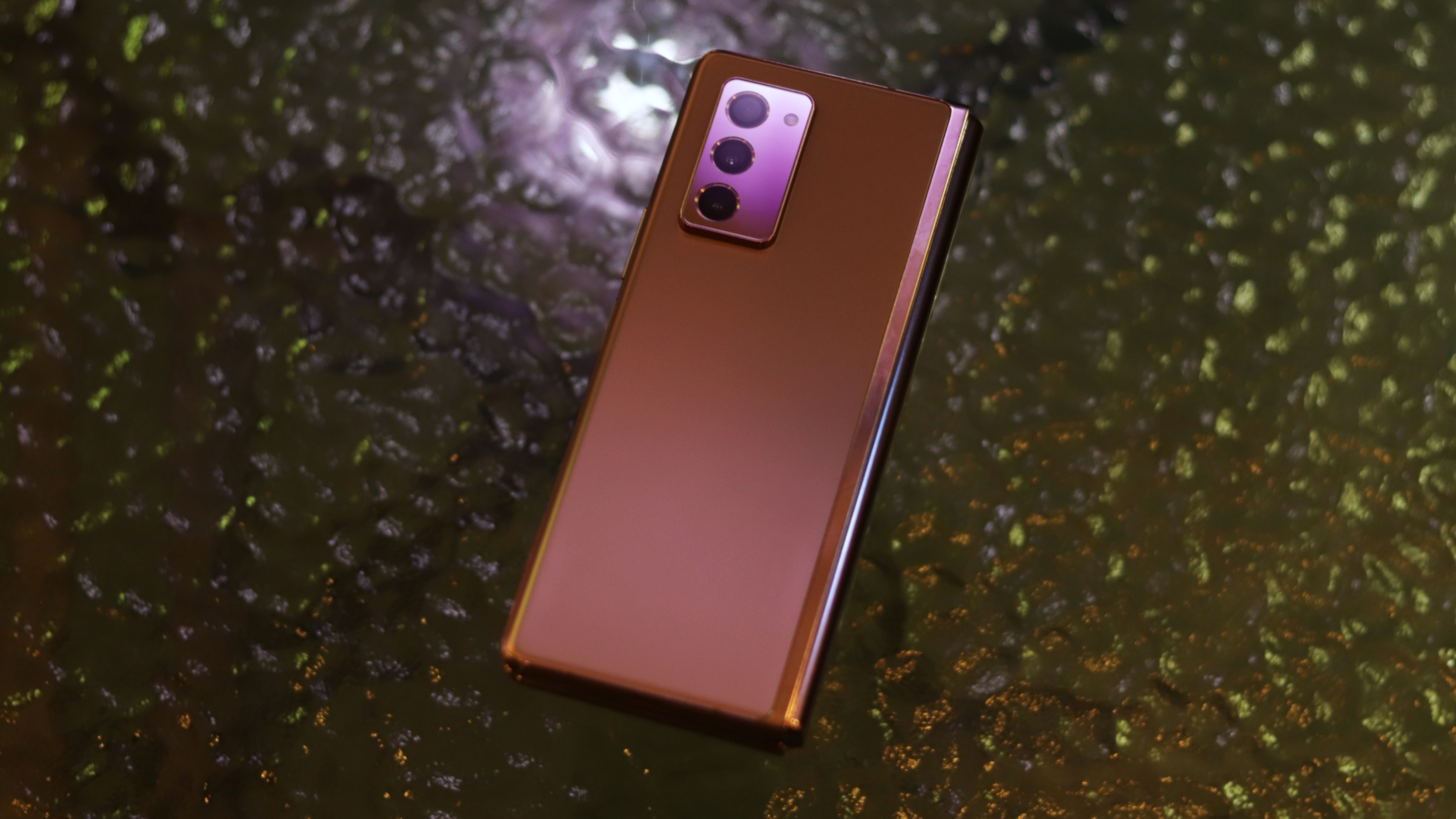
Crucially, the display glass used in both phones actually feels like proper glass – not the horrible plastic-style material used in other foldable phones.
If foldable innovation costs anything beyond money, it’s guarding against water and dust. Neither of these phones gets an IP rating, which is both a bit of a shame and completely understandable.
Display
As we’ve just discussed, we’re essentially comparing a small tablet with a regular-sized smartphone here. The Samsung Galaxy Z Fold 2 presents a massive 7.6-inch display when unfurled, while the Samsung Galaxy Z Flip opens to reveal a 6.7-inch screen.
The aspect ratio of both devices is completely different, with the Galaxy Z Fold 2 opting for a decidedly square 5:4, and the Galaxy Z Flip choosing a more orthodox 21.9:9. The latter is much taller, basically.
A resolution of 1768 x 2208 for the Galaxy Z Fold 2 translates to a 373ppi pixel density, while the 1080 x 2636 Galaxy Z Flip equates to 425ppi. The smaller phone also happens to have a slightly sharper display.
Differences aside, these remain two Samsung screens, which means that both pop with vibrant colors and deep blacks. However, the Foldable Dynamic AMOLED 2X of the Galaxy Z Fold 2 trumps the Foldable Dynamic AMOLED of the Galaxy Z Flip when it comes to refresh rate, since only the larger device can achieve 120Hz. The Galaxy Z Flip is stuck at a meagre 60Hz.
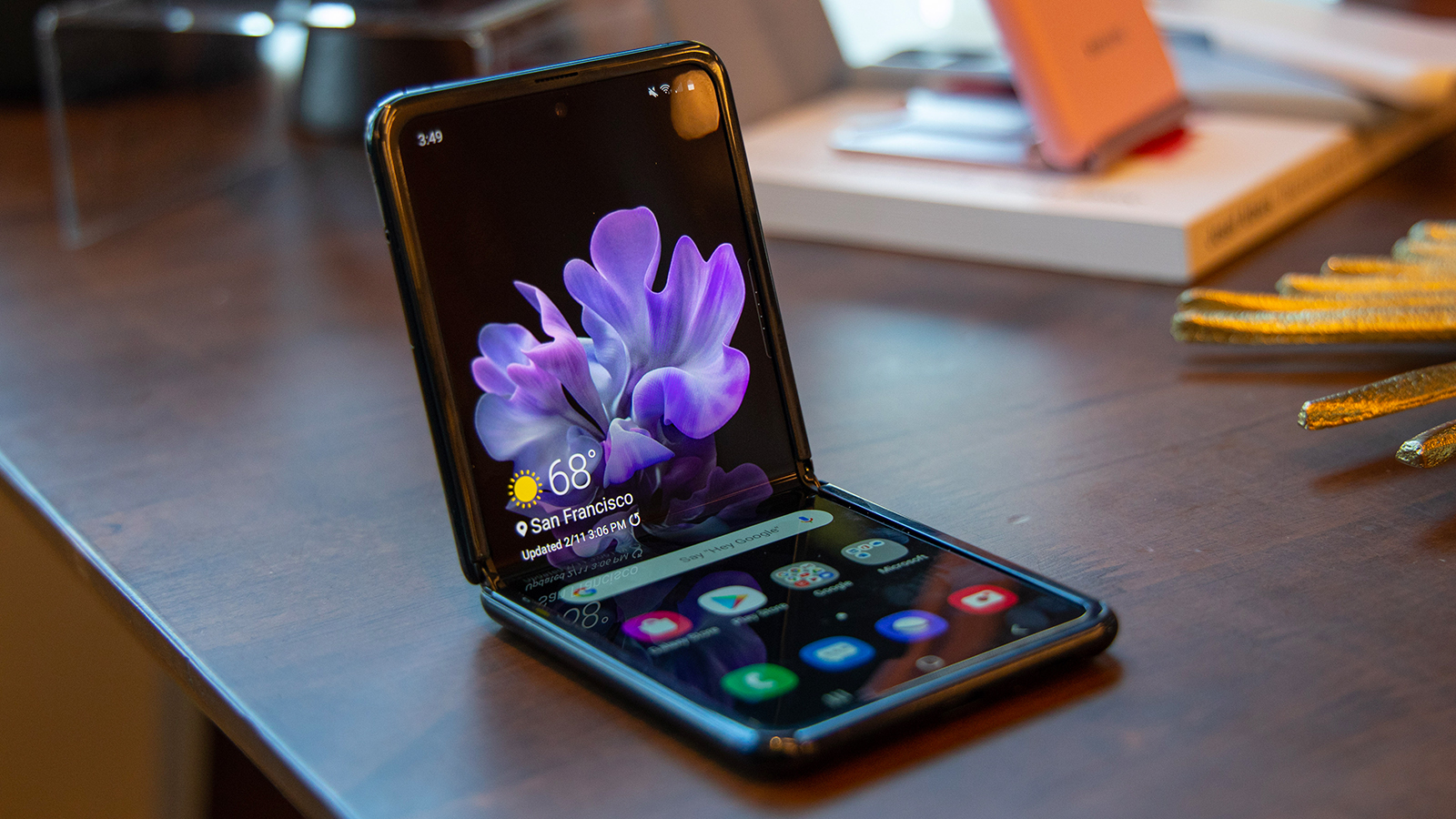
One quirk of foldable phones is that there’s invariably a secondary display to consider. With the Galaxy Z Fold 2, that entails a full-sized 6.23-inch Super AMOLED ‘Cover Display’ that forms one half of the exterior shell. On the Samsung Galaxy Z Flip, that secondary display is a much less useful 1.1-inch Super AMOLED.
While the Galaxy Z Fold 2’s second screen means that it can essentially be used like a normal phone while closed, the Galaxy Z Flip’s tiny secondary screen is only really good for simple notifications, as well as displaying the time and remaining battery life. This simple difference is indicative of the fact that one of these phones is a first-generation device, and we’d expect the Galaxy Z Flip 2 to go bigger with its secondary screen.
The inclusion of a bigger, faster main display and infinitely superior secondary display means the Galaxy Z Fold 2 comfortably wins this round. But really, it all comes down to the kind of form factor you’re after, the kind of content you’ll be consuming, and in which environment you’ll be doing so.
Cameras
Samsung’s implementation of space-hogging foldable and secondary displays inevitably means something had to give. And the most unfortunate sacrifice has been to camera quality.
Considering these phones cost way above $1,000 / £1,000, the camera systems for both handsets leave a lot to be desired. They’re not bad, but they don’t get anywhere near the iPhone 12, the Oppo Find X3 Pro or, indeed, the Samsung Galaxy S21 family.
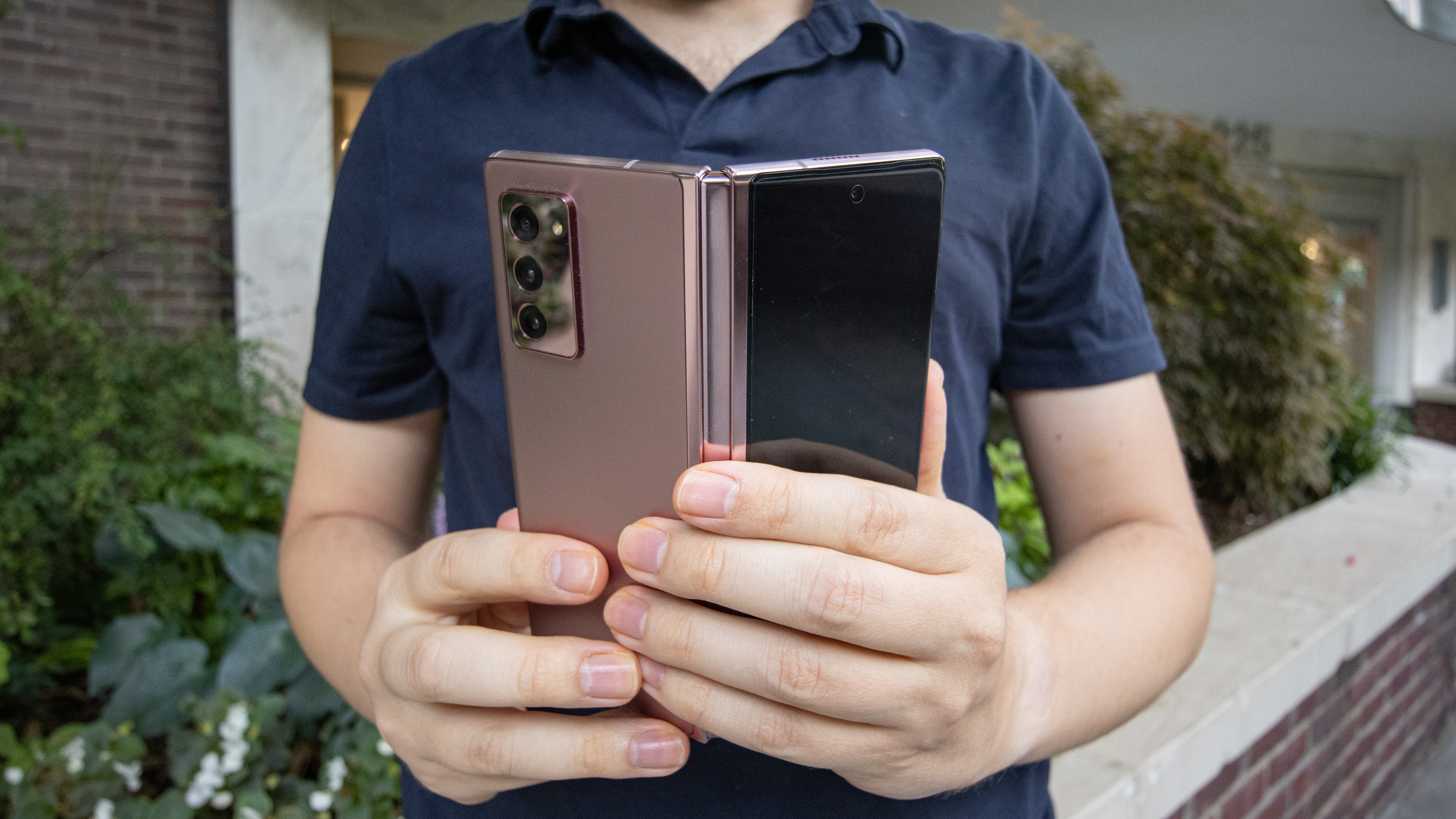
The Samsung Galaxy Z Fold 2’s camera offering is the better of the two, however. It packs three 12-megapixel sensors, which is one more than the Flip’s, and the main sensor is larger at 1/1.76in versus 1/2.55in.
The 12-megapixel ultra-wide appears to be the same across both phones, but the Galaxy Z Fold 2 also adds a 12-megapixel telephoto for 2x optically zoomed shots.
Them’s the figures, but how do they shoot? Very well indeed in the case of the Galaxy Z Fold 2, though it’s certainly not up to Galaxy Note 20 Ultra standards, let alone the Galaxy S21 Ultra.
Still, the unique ability to take a photo using that unfolded 7.6-inch display for guidance, while also being able to view a live preview on the Cover Display, will make those holiday photo requests a lot more manageable. It’s a very niche scenario, but then these are very niche devices.
The Galaxy Z Flip’s camera is even more underwhelming. It essentially uses the same camera tech as the Galaxy S10e from early 2019, with corresponding results. They’re fine in a pinch, but pretty much any decent mid-priced phone from the past year will either match or trump it.
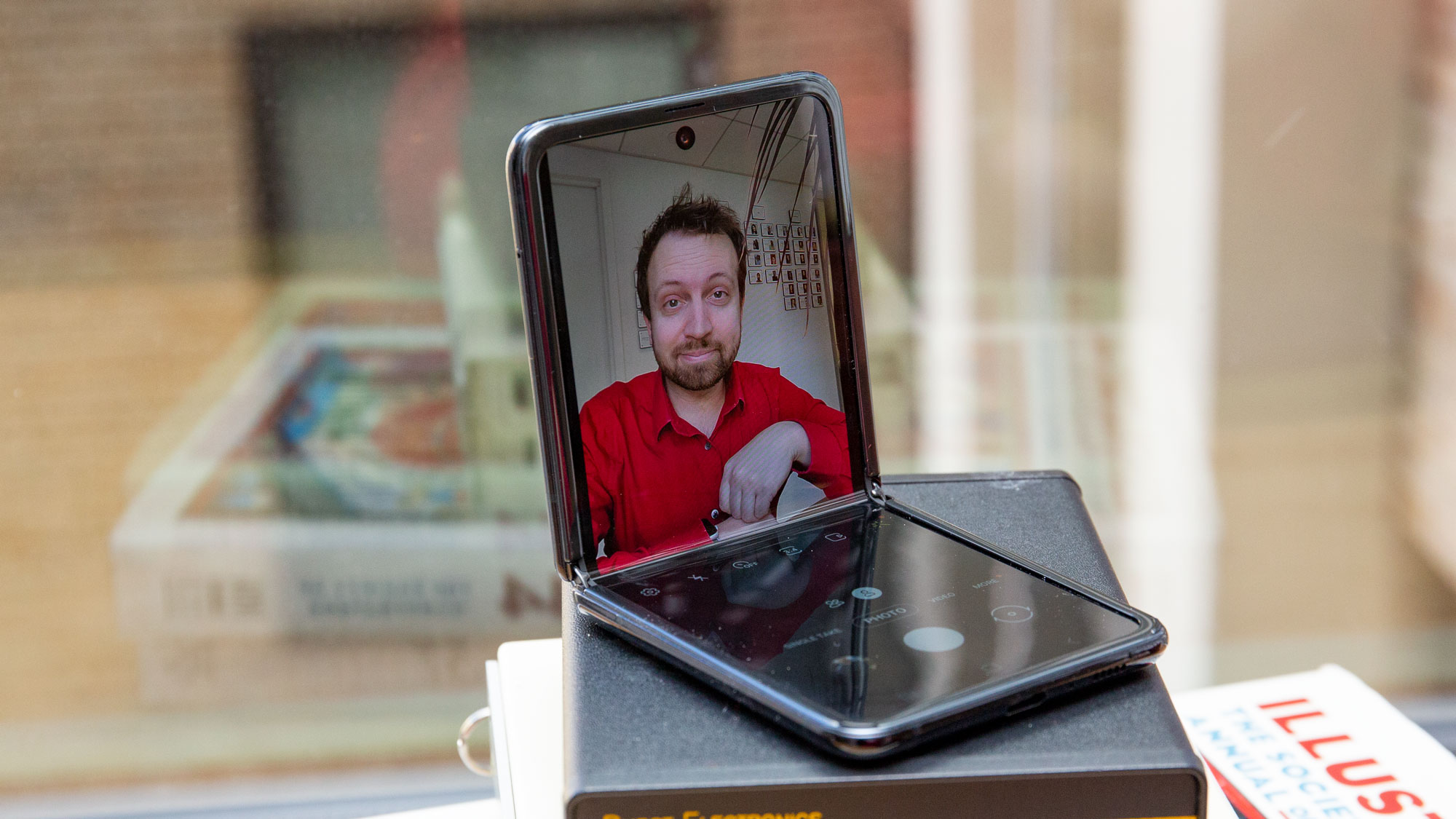
In terms of selfie shots, the Samsung Galaxy Z Fold 2 packs in a pair of 10-megapixel f/2.2 sensors – one for use when the device is open, and one for when it’s closed. The Galaxy Z Flip just has a single 10-megapixel f/2.4 selfie cam.
Specs and performance
Despite the high price you’ll pay for both of these phones, neither is cutting-edge in performance terms.
The Galaxy Z Fold 2 runs on a Snapdragon 865 chip, which was the default flagship processor of 2020. It’s since been superseded by the Snapdragon 888, which has powered the 2021 flagship crowd to even greater heights.
Still, at least non-US customers don’t have to put up with Samsung’s inferior Exynos 990 SoC, as they did with most of the company’s 2020 flagships. A provision of 12GB of RAM is more than healthy, too.
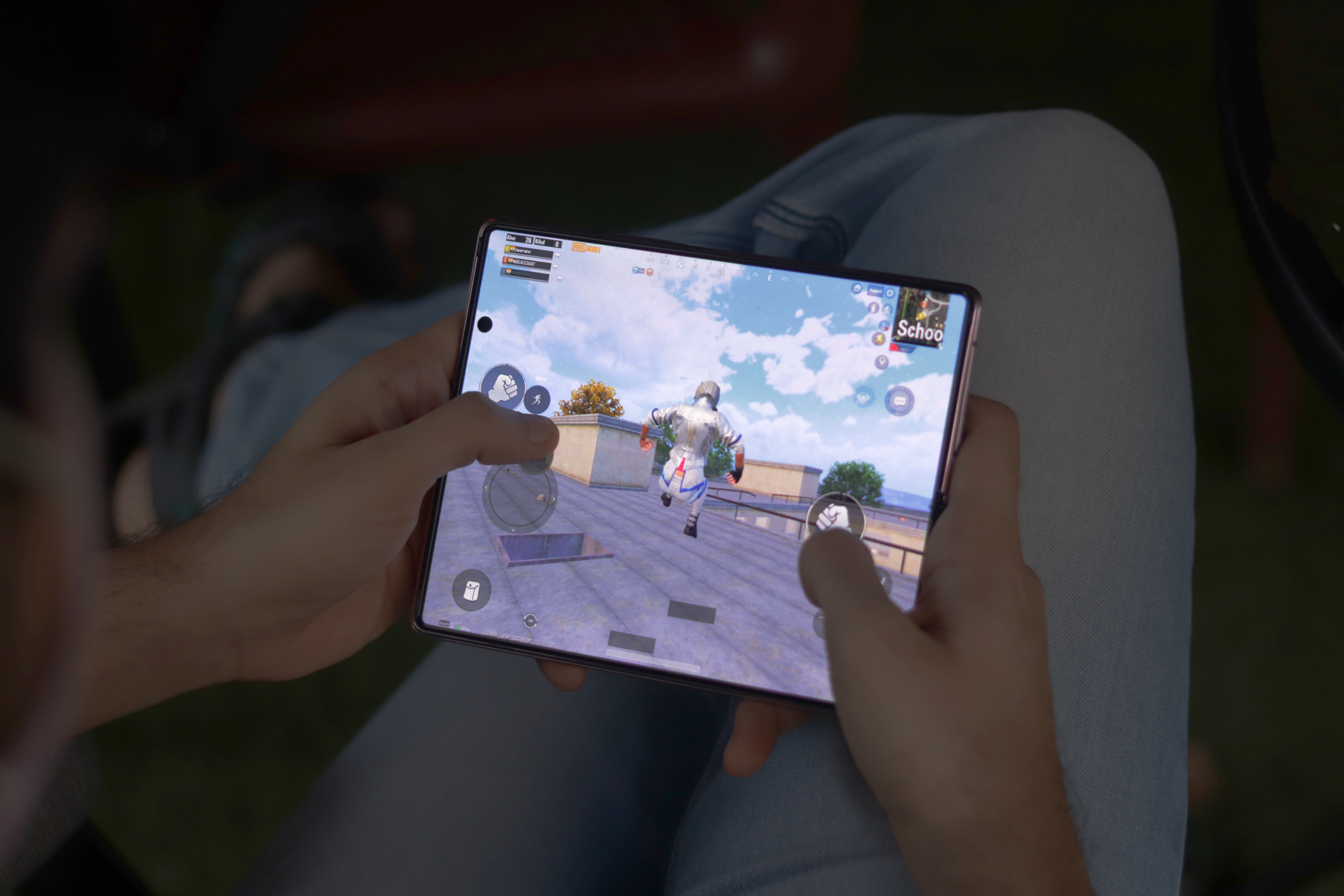
This is also a better spec than the Galaxy Z Flip can manage. Its own Snapdragon 855 Plus chip can be sourced back to late 2019, having previously popped up in the likes of the OnePlus 7T and the Asus ROG Phone 2.
We’re going to need to reference that Galaxy Z Flip 5G revision again here, because the later 5G-ready variant also packs in the Snapdragon 865. It’s an improvement alright, but still far from cutting-edge. Both variants get a lesser (but still perfectly adequate) 8GB of RAM.
Does this mean all that much in practical terms? With a Geekbench 5 multi-core score of 3,172 for the Fold 2, arguably not. Both of the Snapdragon 865 phones can handle anything you throw at them with ease, while the Snapdragon 855 Plus is still no slouch.
But again, when you’re paying more for a phone than literally any non-foldable device – including the blazing-fast iPhone 12 Pro Max and Samsung Galaxy S21 Ultra – you can be forgiven for expecting the very best.
Both phones offer a chunky 256GB of internal storage as standard, although there’s also a 512GB variant of the Samsung Galaxy Z Fold 2.
This being a pair of Samsung phones, there’s nothing to separate them in terms of software. Both handsets currently run Android 11 with Samsung’s own One UI 3.0 layered on top.

We needn’t go over One UI too much again – it’s a fast, highly customisable UI that’s been cleaned up significantly in recent years. What’s interesting here is the way that Samsung’s UI has been customised for the foldable concept.
Multitasking has been made far more potent with Flex mode, which has the power to split compatible apps across each side of the fold. You can watch a YouTube video on one half while scrolling through the comments on the other, for example.
The main drawback is implementation. Samsung’s foldable phones remain a fairly niche proposition in mid-2021, so the whole split-screen app thing hasn’t been widely adopted just yet.
Battery life
With two devices of such differing sizes, you’d probably expect two very different battery provisions – but the difference perhaps isn’t as pronounced as you might expect.
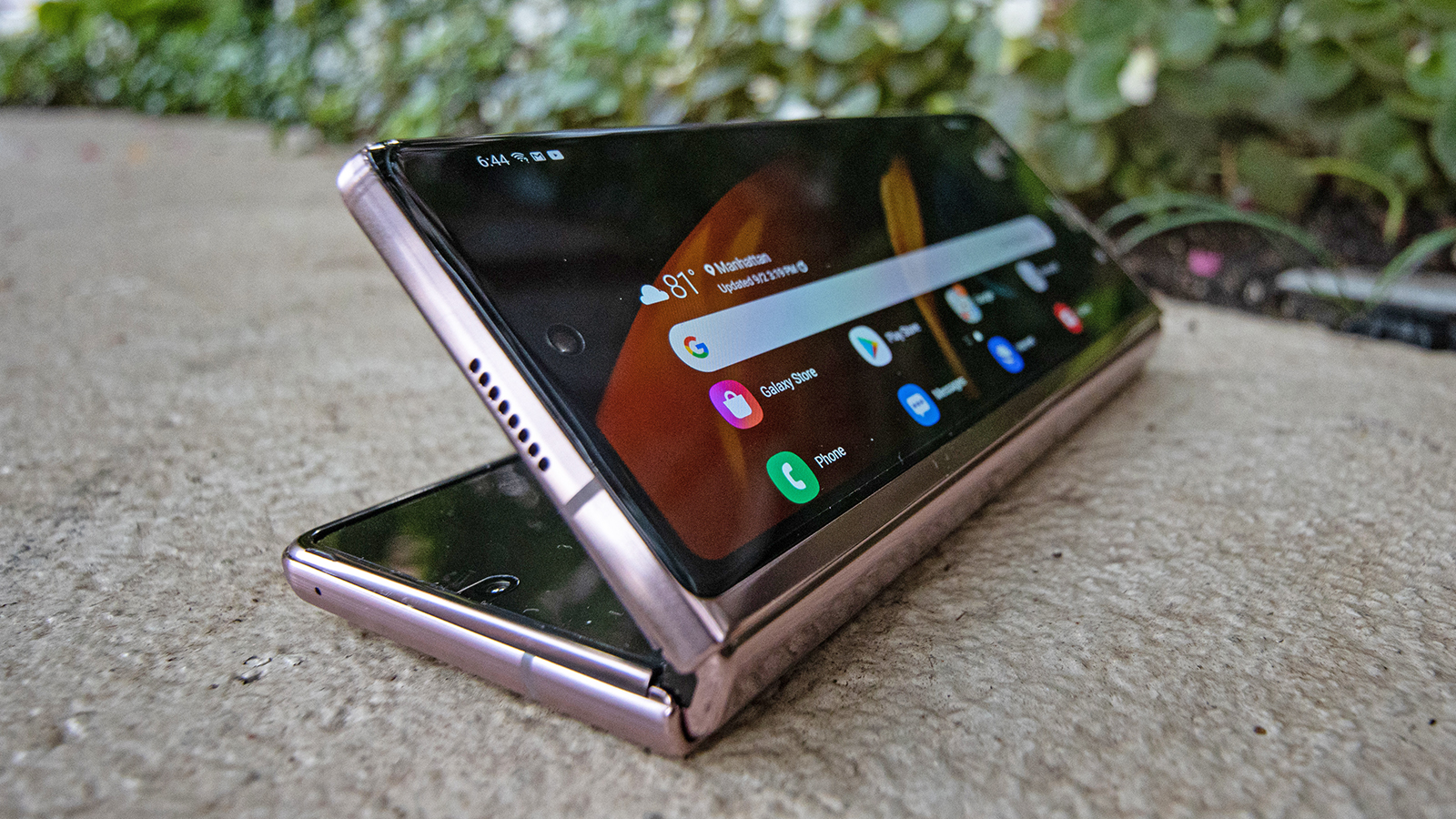
The Galaxy Z Fold 2 includes a 4,500mAh battery, while the Galaxy Z Flip has a 3,300mAh battery. Remember that the Galaxy Z Fold 2 is essentially a mini-tablet, which has to drive a huge 7.6-inch 120Hz display, a pretty large 6.23-inch secondary display, as well as 5G. All this on a battery the same size as the OnePlus 9’s.
In our review, we managed to average all-day battery life from a nightly charge across a whole week. But that was largely through using the standard 60Hz refresh rate. When we bumped things up to 120Hz, our results diminished.
Switching to the Galaxy Z Flip, 3,300mAh really isn’t that much for a modern 6.7-inch flagship phone. But then, this isn’t really a modern flagship phone in several key regards, especially with a mere FHD+ 60Hz display.
Still, we weren’t bowled over by its battery performance. We generally found we could get through a normal waking day with average use before needing to recharge, but more intensive use would leave us high and dry before bed time.
When it comes to recharging, the Galaxy Z Fold 2 packs in a 25W charger, while the Galaxy Z Flip provides only a meagre 15W unit. The former is ostensibly a match for the latest Samsung phones, but the latter feels a little weedy for the money. Both phones support wireless charging, though.
Takeaway

Despite both being foldable Samsung phones released in 2020, the Samsung Galaxy Z Fold 2 and the Samsung Galaxy Z Flip are very different devices.
The former is much bigger, taking on the build of a small tablet as much as a chunky flagship. The latter, meanwhile, is a normal-sized smartphone that folds to half the normal size in your pocket.
But there’s also a key difference in where these two phones are in their development cycle. As the naming suggests, the Galaxy Z Fold 2 is a second-generation device that has had many of the initial gremlins ironed out. The Galaxy Z Flip has learned something from the first Galaxy Z Fold, but it still has its own annoying oversights and rough edges with which to contend.
The Samsung Galaxy Z Fold 2 wins this fight because it’s a more capable, cohesive device, and it offers more than a mere bump in portability. But either way, you’ll need to think carefully before spending so much money on such ageing tech as we head into the second half of 2021. Exciting replacements are on their way.
source https://www.techradar.com/news/samsung-galaxy-z-fold-2-vs-samsung-galaxy-z-flip-turn-on-fold-in-and-flip-out/
0 Comments:
Post a Comment